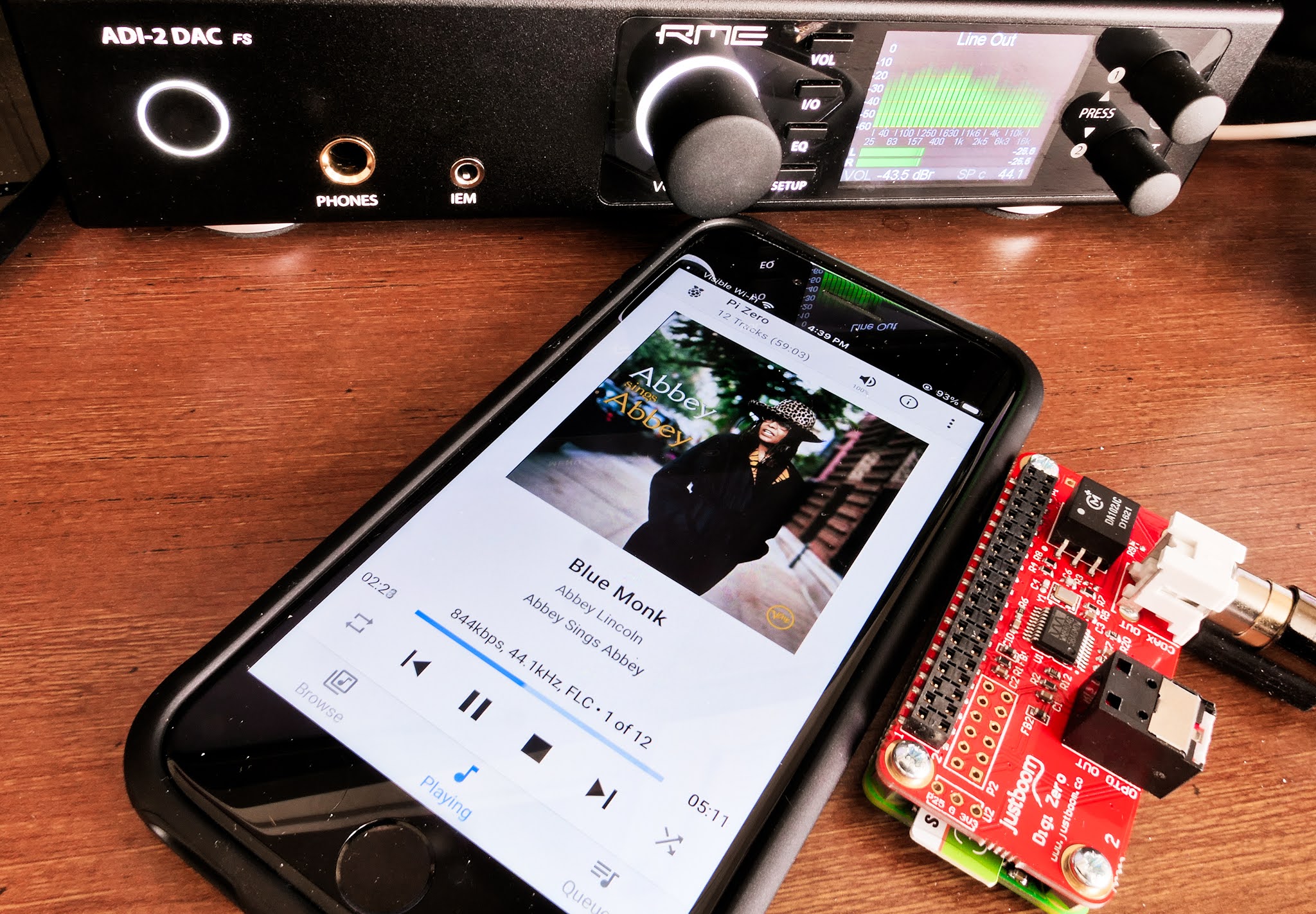Hi all - long time lurker, first time poster.
I've been doing a lot of reading on networked audio streaming, and am looking for some advice. This looks like the right place.
TL;DR: looking to setup the ability to stream FLAC files from my NAS to various speakers around the house, using an iPhone as the control point.
Must haves: centralised playlists, streaming over wi-fi (5GHz), decent quality audio, controller app must work on iPhones
Nice to haves: the same music playing in two rooms at once, internet radio, may introduce a streaming service like Spotify at a later stage.
Current situation:
My music collection comprises FLAC files (my CD collection ripped) that reside on a share on my QNAP NAS. I currently access this from my iPhone using the QNAP QFile app, and another app called FLACbox which is a little unstable when accessing network shares.
I play the music as follows:
- via a Chromecast Audio into my Harman Kardon stereo integrated amp
- via Airplay into my Yahama AVR,
- via Bluetooth into a portable Bose speaker
These are all in different rooms. None of the speakers are near an ethernet connection point.
This kind of works, but has some limitations. I am wondering if, with the addition of some Raspberry Pis and DACs, and the right software, I can achieve something better, both in terms of SQ and convenience and flexibility.
The NAS is not a high-powered model, it has a Marvell CPU with only 512MB RAM. In terms of serving files it does fine. I can run MinimServer on it, but would prefer to keep it as a file server only.
I have a Raspberry Pi 4 (headless) which is currently running my VPN server, and Pi-Hole - both in Docker containers - so it is not exactly over-worked.
Both the Pi and the NAS are networked (ethernet), however none of them are anywhere near any of my audio systems.
I'm happy to acquire more RPis (maybe 3A/B or Zero models so no heating issues, and cheaper) along with DACs (HAT /USB) to play into my existing audio systems. For the audio feed into the Harmon Kardon amp I'd want good quality, the others not as important.
I've read about software like Logitech Media Server, PiCorePlayer, MoOde Audio, Volumio, RoPieee etc.
I've also read about controller apps like mConnect, iPeng
What I am not sure about is exactly how these can all work together.
For example:
Could I install (say) LMS on the existing RPi 4 to perform the music server functions - or is a network share enough ?
Could I setup one or more RPis with DACs running something like MoOde/RoPieee as players.
And finally could I use a suitable iOS app (like mConnect) to direct the music from the source to one or more players, and play using playlists?
Apologies for the long post and many questions.
Thanks in advance.
I've been doing a lot of reading on networked audio streaming, and am looking for some advice. This looks like the right place.
TL;DR: looking to setup the ability to stream FLAC files from my NAS to various speakers around the house, using an iPhone as the control point.
Must haves: centralised playlists, streaming over wi-fi (5GHz), decent quality audio, controller app must work on iPhones
Nice to haves: the same music playing in two rooms at once, internet radio, may introduce a streaming service like Spotify at a later stage.
Current situation:
My music collection comprises FLAC files (my CD collection ripped) that reside on a share on my QNAP NAS. I currently access this from my iPhone using the QNAP QFile app, and another app called FLACbox which is a little unstable when accessing network shares.
I play the music as follows:
- via a Chromecast Audio into my Harman Kardon stereo integrated amp
- via Airplay into my Yahama AVR,
- via Bluetooth into a portable Bose speaker
These are all in different rooms. None of the speakers are near an ethernet connection point.
This kind of works, but has some limitations. I am wondering if, with the addition of some Raspberry Pis and DACs, and the right software, I can achieve something better, both in terms of SQ and convenience and flexibility.
The NAS is not a high-powered model, it has a Marvell CPU with only 512MB RAM. In terms of serving files it does fine. I can run MinimServer on it, but would prefer to keep it as a file server only.
I have a Raspberry Pi 4 (headless) which is currently running my VPN server, and Pi-Hole - both in Docker containers - so it is not exactly over-worked.
Both the Pi and the NAS are networked (ethernet), however none of them are anywhere near any of my audio systems.
I'm happy to acquire more RPis (maybe 3A/B or Zero models so no heating issues, and cheaper) along with DACs (HAT /USB) to play into my existing audio systems. For the audio feed into the Harmon Kardon amp I'd want good quality, the others not as important.
I've read about software like Logitech Media Server, PiCorePlayer, MoOde Audio, Volumio, RoPieee etc.
I've also read about controller apps like mConnect, iPeng
What I am not sure about is exactly how these can all work together.
For example:
Could I install (say) LMS on the existing RPi 4 to perform the music server functions - or is a network share enough ?
Could I setup one or more RPis with DACs running something like MoOde/RoPieee as players.
And finally could I use a suitable iOS app (like mConnect) to direct the music from the source to one or more players, and play using playlists?
Apologies for the long post and many questions.
Thanks in advance.

